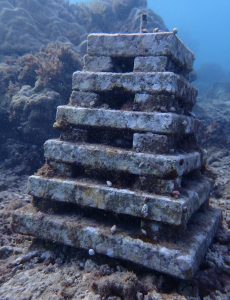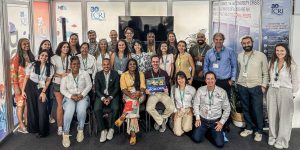Will Greene is a research associate and photogrammetry specialist at PIMS. He leverages 3D modeling and Geographic Information Systems (GIS) technology to monitor coral reef and mangrove ecosystems, so that we can do a better job of preserving and restoring them for future generations.
We catch up with Will, his journey into the world of ocean sciences, and his unique skillset below!

Will, tell us how it all began. What inspired you to become a marine biologist?
“I grew up on an island on the coast of Maine, less than a mile from Acadia National Park, so I’ve been surrounded and fascinated by the ocean my entire life. I spent most of my free time as a kid exploring the ins and outs of Acadia National Park, which instilled in me a passion for nature and conservation that’s at the core of who I am. I graduated from Middlebury College in Vermont in 2019 with a degree in conservation biology and a focus in geography and cartography. During my senior year there, after taking a course on coral reef ecology in The Bahamas and falling in love with the underwater world all over again, I began working with PIMS on underwater photogrammetry projects, which evolved into a full time job in 2020.”

Above: Mangroves at night (drone shot by Will).
What does your day-to-day look like working at PIMS?
“When I’m in the field, I spend most of my time behind a camera, collecting data to make underwater models and maps with sub-millimeter precision, or flying a drone to map the land and shallow reefs from the sky. Back in the office (or the home during COVID!), I work on a computer to process, analyze, and learn from all of the field data to help with a wide variety of projects.

Above: Will’s model of Sandy Cay reef off Abaco, The Bahamas.

Above: A drone shot of the research ship, R/V Angari.

Above: An aerial shot of coral reefs.
Tell us more! How do your models bolster our understanding of coral reefs?
“Here’s my favorite way to think about what I do: creating digital replicas of exactly what the environment looked like at the time I was there, so that we can explore the model and learn all sorts of things from it (maybe even some things we were totally unaware of when we were in the field) in the future. It’s a complicated and incredibly fun job that lets me use my passions for conservation, biology, photography, mapping, and coral reefs, all at the same time!”

Above: A 3D model of a coral reef created by Will.
What’s the best part of your job?
One of the most rewarding parts of my job is getting to create aesthetically pleasing products, from hyper-accurate reconstructions of intact and beautiful reefs that you can explore in 3D, to taking mesmerizing drone photos from hundreds of feet above the ground. It’s an amazing way to highlight the natural beauty of The Bahamas. I hope that some of them bring new inspiration for you to help protect our natural world – they sure do for me!

Rewilding the Marls of Abaco: PIMS Plants 100,000 Mangroves and Counting in 2024
As the afternoon sun bathes the Marls of Abaco in golden light, Bahamian boat captain Willis Levarity–locally known as “Captain to the Stars”–stands ankle-deep in soft, warm mud. A broad

Unveiling Coral Reef Biodiversity: Insights from ARMS Monitoring Structures
An ARM teeming with new coral recruits and a diversity of marine life, highlighting reef recovery and biodiversity Understanding Coral Reef Biodiversity Most new PhDs in the natural sciences move

7 Key Takeaways from COP16: Confronting Coral Reef Challenges in a Changing Climate
United #ForCoral: Experts, advocates, and leaders from across the globe join forces at COP16 for the #ForCoral conference, hosted by the International Coral Reef Initiative. Together, they’re driving urgent action

Fieldwork Wrap-Up: Strengthening MPA Management in The Bahamas
Marine protected areas (MPAs) are critical tools in the conservation of marine species and habitats, safeguarding reefs, seagrasses, and mangroves that provide vital ecosystem services to coastal communities. At the

Coral Reef Monitoring with Photogrammetry: A New Era in Reef Health Assessment
Coral reefs are some of the most biodiverse ecosystems on the planet, providing crucial habitat for marine life and protecting coastal regions from erosion. Yet, these vibrant ecosystems are increasingly

Watch “We Among the Reef:” A Documentary on the Abaco Barrier Reef
The Perry Institute for Marine Science invites you to watch “We Among the Reef,” a compelling documentary that illuminates the significance of the Abaco Barrier Reef and the resilience of




